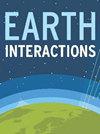SWAT水文模型的应用领域综述
IF 1.1
4区 地球科学
Q3 GEOSCIENCES, MULTIDISCIPLINARY
引用次数: 5
摘要
SWAT (Soil and Water Assessment Tool)是一种广泛应用于变化环境下径流、非点源污染等复杂水文过程(地下水流动、蒸散发、融雪等)的模型。本文综述了SWAT的主要特点及其应用。自1990年代开始以来,与SWAT模型相关的文章数量显著增加。在过去的10年里,文章的数量几乎达到了4000篇。应用范围在小规模和大规模之间有所不同;然而,大型流域模型在北美和亚洲占主导地位。此外,目前流行的模型与不断变化的环境中的水文影响有关,这是一个全球性问题。SWAT模型的一个显著缺点是需要大量的数据来运行模型以产生准确可靠的结果,而这些数据在世界上的一些地区是无法获得的。除了可访问性之外,它还有几个优点,包括持续开发,从而产生大量支持该模型的新接口和工具。此外,它还可以模拟人类活动和农业措施,以适应新的环境和情况。本文强调了SWAT模型在气候和环境变化条件下水文过程模拟中的优缺点。本文章由计算机程序翻译,如有差异,请以英文原文为准。
Fields of Application of SWAT Hydrological Model—A Review
Soil and Water Assessment Tool (SWAT) is a widely used model for runoff, non-point source pollution, and other complex hydrological processes under changing environments (groundwater flow, evapotranspiration, snow melting, etc.). This paper reviews the key characteristics and applications of SWAT. Since its inception in the 1990s, there has been a significant increase in the number of articles related to the SWAT model. In the last 10 years, the number of articles almost reached 4000. The range of applications varies between small and large scales; however, large watershed modelling dominates in North America and Asia. Moreover, the prevailing modelling is related to hydrological impacts in a changing environment, which is a global problem. The significant shortcoming of the SWAT model is the vast quantity of data necessary to run the model to generate accurate and reliable results, which is not accessible in some regions of the world. Apart from its accessibility, it has several advantages, including continuous development, which results in a slew of new interfaces and tools supporting the model. Additionally, it can simulate human activity and agricultural measures and adapt to new circumstances and situations. This article emphasizes weaknesses and strengths of SWAT model application on modelling of hydrological processes in changing climate and environment.
求助全文
通过发布文献求助,成功后即可免费获取论文全文。
去求助
来源期刊

Earth Interactions
地学-地球科学综合
CiteScore
2.70
自引率
5.00%
发文量
16
审稿时长
>12 weeks
期刊介绍:
Publishes research on the interactions among the atmosphere, hydrosphere, biosphere, cryosphere, and lithosphere, including, but not limited to, research on human impacts, such as land cover change, irrigation, dams/reservoirs, urbanization, pollution, and landslides. Earth Interactions is a joint publication of the American Meteorological Society, American Geophysical Union, and American Association of Geographers.
 求助内容:
求助内容: 应助结果提醒方式:
应助结果提醒方式:


